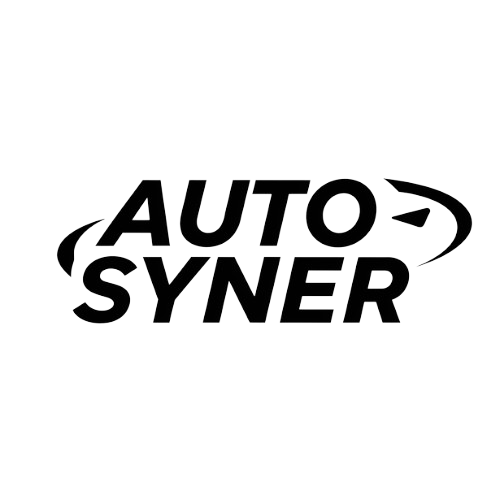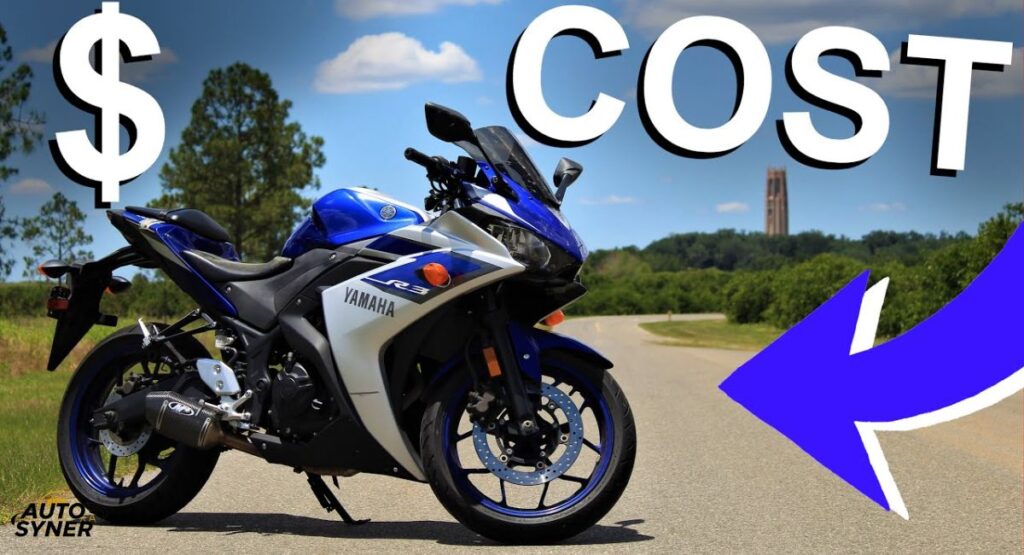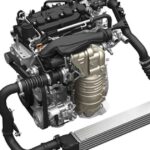Motorcycle costs can vary depending on several factors. The price of a new bike often depends on the brand model and features. Maintenance and repairs also add to the overall cost. Additionally insurance is a necessary expense for all riders. It is important to consider these costs when budgeting for a motorcycle.
Used motorcycles usually cost less than new ones. However, they might require more frequent repairs and upkeep. Insurance for a used bike may also be cheaper. Still, the total cost of ownership includes more than just the purchase price. Understanding all these factors can help you make a smart buying decision.
Factors Affecting Motorcycle Cost
Several factors affect motorcycle costs. The brand model and features all play a role. Maintenance repairs and insurance also impact the total expense.
- Brand: Renowned brands like Harley-Davidson or Ducati often command higher prices due to their reputation and quality. Less well-known brands might offer similar features at a lower cost.
- Model: Different models come with varying price tags. Sports bikes with their advanced technology and performance capabilities, generally cost more than standard cruisers or touring bikes.
- Engine Size: Motorcycles with larger engines usually cost more. A bigger engine provides more power but also increases the bike price and insurance costs.
- Features: Additional features such as advanced braking systems navigation or high-end suspension, can significantly raise the cost of a motorcycle. Basic models without these extras are generally more affordable.
- Condition: New motorcycles are more expensive than used ones. However used bikes may require more frequent repairs and maintenance which can add to the overall cost of ownership.
Average Motorcycle Prices in 2024
Average motorcycle prices in 2024 vary widely. Entry-level models start around $5,000. Mid-range bikes typically cost between $8,000 and $12,000. High-end or specialty models can exceed $15,000. These prices reflect different features and performance levels.
Prices also depend on the type of motorcycle you choose. Sport bikes and touring bikes usually cost more than cruisers. New models generally cost more than used ones. Regional factors can also influence prices. Understanding these ranges helps in budgeting for your next bike.
How to Budget for a New Motorcycle
Budgeting for a new motorcycle involves several steps. Start by researching different models and their prices. Determine how much you can afford to spend upfront. Factor in additional costs like insurance and registration. Create a savings plan to cover these expenses.
Consider setting aside a monthly amount for your motorcycle fund. Review your budget regularly to adjust as needed. Look for financing options if necessary but be aware of interest rates. Make sure your budget includes maintenance and gear costs. Planning carefully will help you manage your motorcycle purchase smoothly.
Read This Blog: Can You Lease a Used Car?
Motorcycle Insurance Costs
Motorcycle insurance costs vary based on several factors. Your riding history bike type and coverage level all affect the price. Generally expect to pay more for comprehensive coverage and less for basic policies.
- Bike Type and Value: Insurance costs depend on the type and value of your motorcycle. High-performance or luxury bikes usually have higher premiums.
- Age and Driving History: Younger riders or those with a history of accidents often face higher rates. A clean driving record can help lower your insurance costs.
- Coverage Levels: More comprehensive coverage including collision and theft increases the premium. Basic liability coverage costs less but offers less protection.
- Location: Where you live affects your rates. Areas with higher theft rates or accident statistics can lead to higher insurance costs.
- Discounts: Many insurers offer discounts for safe riding courses good driving record, or bundling with other insurance policies. Check for available discounts to reduce your premium.
Cost of Motorcycle Maintenance and Repairs
Motorcycle maintenance and repairs can add up. Routine services like oil changes are regular expenses. Unexpected repairs can be costly so budgeting for them is important.
Regular Oil Changes
· Routine oil changes are necessary for engine health.
· Costs range from $50 to $100 per change.
· The price varies depending on oil type and service provider.
Tire Replacements
· Tires may need replacement every 5,000 to 10,000 miles.
· Expect to spend $150 to $300 per tire.
· Additional costs include labor for installation.
Brake Pads
· Brake pads require replacement when they wear down.
· Replacement costs range from $75 to $150 per set.
· Labor charges may apply for installation.
Labor Costs
· Repair labor rates vary by shop and complexity.
· Typical rates are $75 to $150 per hour.
· Higher rates may apply for specialized services.
Scheduled Maintenance
· Includes fluid checks, filter replacements, and adjustments.
· Maintenance costs typically range from $100 to $300 per visit.
· Regular maintenance helps prevent more costly repairs.
Comparing Costs: New vs. Used Motorcycles
New Motorcycles
New motorcycles generally cost more than used ones. They come with the latest features and a full warranty. Prices for new bikes often start around $5,000 and can go much higher. You’ll also pay more for insurance and registration. However, you get the advantage of a brand-new ride.
Used Motorcycles
Used motorcycles usually cost less upfront. Prices can be significantly lower depending on the bike’s age and condition. Maintenance and repair costs might be higher for used models. Insurance might be cheaper, but the bike may not have a warranty. Weighing these factors helps in making an informed decision.
Hidden Costs of Motorcycle Ownership
Motorcycle ownership includes hidden costs beyond the purchase price. Regular maintenance and repairs can add up over time. Gear such as helmets gloves and jackets also contribute to expenses. Parking and storage fees might be necessary, depending on where you live. These costs can impact your overall budget.
Insurance premiums vary and can be higher for certain bikes. Fuel costs depend on how often you ride and your bike’s efficiency. Upgrades and accessories can quickly increase expenses. Unexpected repairs or accidents may add additional costs. Being aware of these factors helps in budgeting more accurately.
Tips for Reducing Motorcycle Expenses
To reduce motorcycle expenses, keep up with regular maintenance to avoid costly repairs. Look for discounts on insurance and consider bundling policies. Buy used parts or do some repairs yourself to save money.
- Regularly maintain your bike: Keep up with routine maintenance like oil changes and tire checks. Regular care prevents major issues and costly repairs down the line.
- Shop around for insurance: Compare quotes from different insurance providers. Look for discounts based on your riding history or safety features on your bike.
- Compare fuel prices: Check prices at various gas stations and use your motorcycle efficiently. Fuel-efficient riding can lower your overall fuel costs.
- Consider buying used parts: For repairs or upgrades, used parts can be a more affordable option than new ones. Just ensure they are in good condition.
- Take a motorcycle safety course: Completing a safety course can lead to discounts on your insurance premiums. It also improves your riding skills and safety.
- Store your bike properly: Use a cover or store your bike in a garage to protect it from weather and theft. Proper storage helps prevent damage and reduces repair costs.
- Look for discounts on gear and accessories: Watch for sales or promotions on motorcycle gear and accessories. Buying during discounts can save you money.
Frequently Asked Question
What factors affect motorcycle cost?
Motorcycle cost depends on the brand, model, and features. Maintenance, insurance, and repairs also impact the total cost. Higher-end models and new bikes generally cost more.
How much do motorcycles cost on average?
Average motorcycle prices vary widely. Entry-level models start around $5,000. Mid-range bikes can cost between $8,000 and $12,000. High-end models can exceed $15,000.
What should I budget for when buying a new motorcycle?
When buying a new motorcycle, budget for the purchase price, insurance, and registration. Also, include costs for gear, maintenance, and any financing. Save extra for unexpected expenses.
How do used motorcycles compare in cost?
Used motorcycles typically cost less than new ones. However, they might require more frequent repairs and may not come with a warranty. Insurance for used bikes may be cheaper as well.
What are some tips for reducing motorcycle expenses?
To reduce expenses, maintain your bike regularly to prevent costly repairs. Shop around for insurance discounts and consider buying used parts. Do some maintenance work yourself if possible.
Conclusion
Motorcycle costs involves more than just the initial price. It’s crucial to consider ongoing expenses like maintenance insurance and repairs. New motorcycles generally cost more but come with warranties and the latest features. Used motorcycles are often cheaper but may require more upkeep and don’t always have warranties.
Budgeting carefully for both upfront and hidden costs will help you manage your expenses better. By planning for maintenance insurance and gear, you can avoid unexpected financial strains. Whether buying new or used, being aware of all potential costs ensures a more informed decision and helps you enjoy your ride without financial surprises.







